A year or so ago I acquired a dream gun of mine: A full size UZI in 9mm, this one in particular being built by FN .
To me (and others), this gun is an icon. Most people associate the UZI with gangster and TV series and movies from the 80’s and 90’s.
A quick look at the IMFDB page on the UZI gives you a glimpse at the impact this gun had on popular culture.

The UZI is not only a gun loved by Hollywood, it also had a resounding military success.
The gun is a late 40’s and early 50’s design that was adopted by the IDF in 1954. In the same decade the gun was adopted by the Royal Netherlands Army (1956), by the Bundeswehr (1959) as well as the Belgian armed forces (1958) with UZI’s made under license by FN (we’ll come back to that).
It was adopted by many other countries or paramilitary forces and was also produced under license (or not) in many different countries such as Croatia, Rhodesia, Yugoslavia or China. I won’t do a full history breakdown, there are more resources available for this floating around the internet.

The FN UZI
Disclaimer: I wrote this post with information I found left and right on the internet. There might be some incorrect information or assumptions here.
In 1958, the Fabrique Nationale Herstal (FN for short) in Belgium started the production of the UZI SMG’s for the Belgian Armed Forces as well as for the Gendarmerie, a former paramilitary police force.
They have been in use as late as in 2015 during police force deployments in Belgium following the 2015 terrorist attacks in Paris.
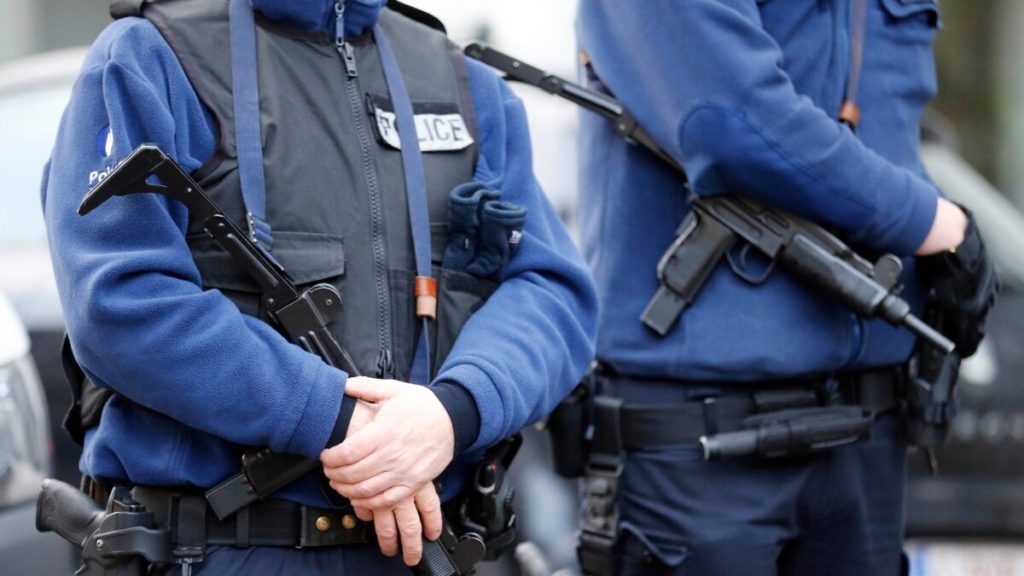
A video from a 2021 training session of the Belgian Federal Police shows the UZI being used.
My FN UZI
Let’s take a closer look at mine in particular with a few pictures and take a look at the details.
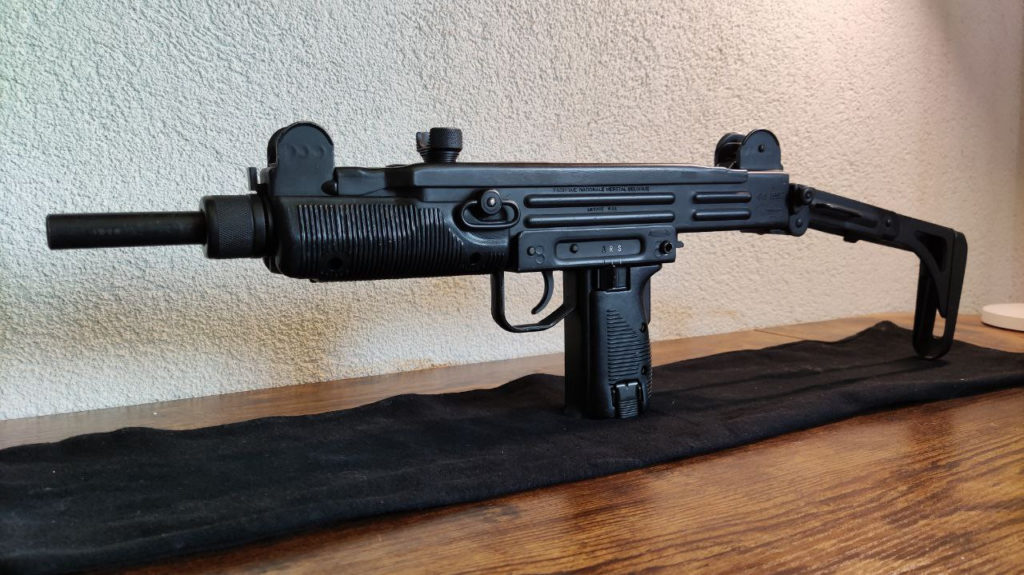
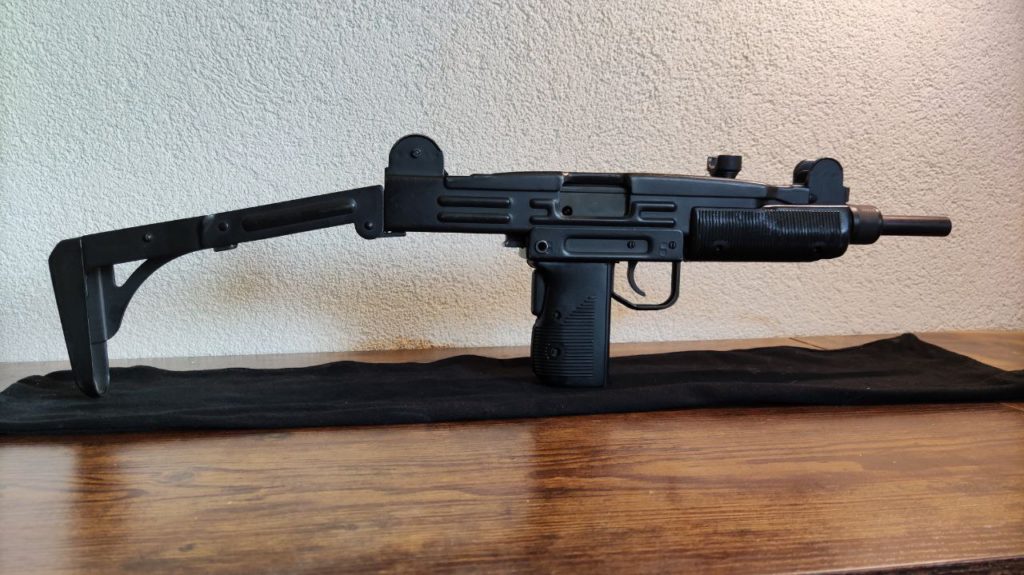
The FN UZI was produced under license from IMI and is a direct copy of the UZI model A.
I will not spend time to explain the difference between the model A and B. Uzitalk.com already has a great article on the differences between the two.

Markings

At the rear of the receiver there is a Gd 1987 marking to indicated that it’s a Gendarmerie issued gun and produced (or issued, not sure about this one) in 1987
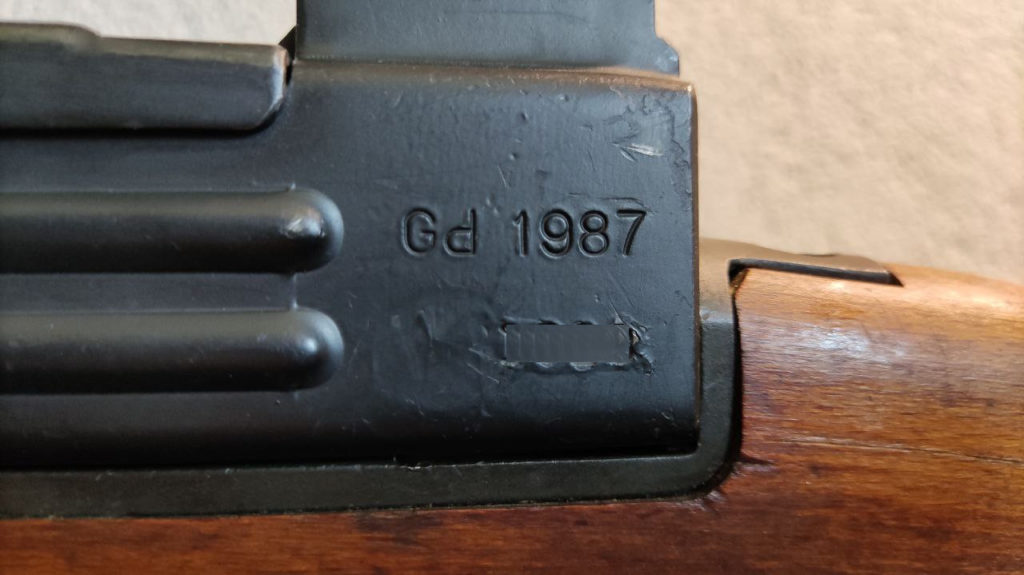
They were produced as full-auto and also as semi-autos by adapting the fire control group. My particular example was converted to semi-auto before hitting the civilian market. They installed a complete semi-auto lower and re-stamped the serial number on it.
Sights
The sights are peep sights with fixed 100 meters and 200 meters settings. Very optimistic for an open bolt 9mm. The front sight is adjustable for windage and elevation. Sadly it needs a specific tool to adjust it and that tool is pretty rare to find in Europe.
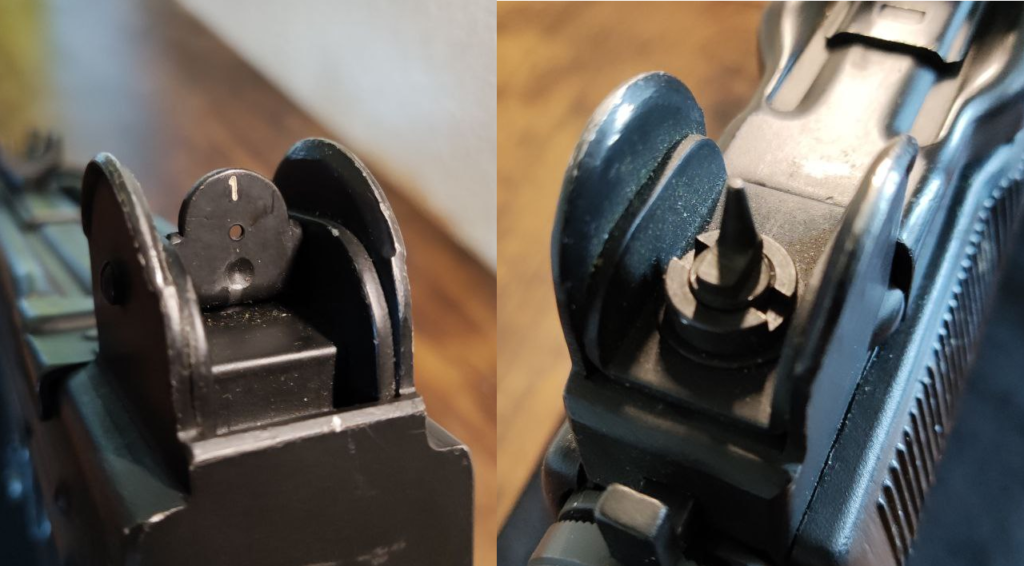
Stocks
The FN UZI being a military pattern gun, they can accept wood stocks without modifications. The wood stock is quick detach but the folding stock is not.
There is an hex screw at the back of the receiver to remove the folding stock. You’ll need to disassemble the gun and remove the bolt and recoil spring to access and remove the nut at the rear of the receiver.
Once the folding stock is removed you can simply slide and lock the wood stock into place.

The wood stock I have comes from a German MP2 and is not an original FN stock.
The official FN manual for the UZI says that a wood stock can be provided but I don’t know if a lot of them were actually shipped with the wood stock. It also appears that they produced a straight comb stock which is typical of early UZIs.

Attachments
When it comes to attachment, optics or other accessories, the UZI offers… nothing. There is a bayonet lug and some companies actually make picatinny rails that adapt on the lug but they’re a bit wobbly so they’re ok for grips or lamps not for anything that needs to hold zero (like a laser unit).
As for mounting optics, you can find top covers with picatinny rails online or buy a rail and drill and tap the top cover

The sling
The UZIs issued to the Gendarmerie came with a sling in a nice, deep, “law enforcement” looking blue canvas. There’s really not a lot to tell about this sling. There’s two leather keepers on it that are way too loose to stay in place and two metal pieces that allow the sling to be adjusted.
They’re the same pattern as some Israeli military slings, only the color is different.

In my opinion, this is not a good sling. The UZI is a heavy beast of a submachine gun and with a loaded magazine the sling is just too thin to be comfortable. It’s ok if you’re wearing some heavy clothes but if you’re just wearing a simple shirt the sling will dig into your neck pretty quick.
It’s alright as a sling for law enforcement agencies that use this gun only on specific occasions and for a short amount of time, but it’s not really a sling that’s adapted if you’re gonna carry this gun for more than an afternoon.
The loading tool (magazine filler)
UZI mags are very easy to load. They are well made, double stack, double feed magazines so they’re a breeze to load and top up. Despite that, a small loading tool exists:

That little tool basically acts as a stripper clip. Just put it on top of the magazine facing the right way, put ammo in it and use your thumb to push the ammo inside the mag.
I have a little tip to make the process easier: Never insert all the ammo into the mag, always leave one round in the loading tool and then top it off again. The last round is actually harder to insert using the loading tool than by hand.
The official manual
The official FN manual is available online, I posted it here for safekeeping, you can read or download the original manual in English below.
Shooting it
As an open bolt gun, shooting the UZI is really different from standard closed bolt straight blowback guns, but it’s a lot of fun.
On a purely technical point of view, the accuracy is pretty good. The barrel is pretty long (260mm/10.6 inches) for a submachine gun and is of great quality. The biggest problem when it comes to accuracy is the fact that it’s open bolt. The weight of the bolt going forward will screw up your line of sight before the cartridges even detonates. With some experience and time behind the gun you’ll be hitting center mass at 50 meters with pretty good groupings.
I’ll post some groupings in another posts later this year.
One thing I’d like to point out though is that the UZI (at least the full size military ones) likes hot ammo. Standard commercial 124grs FMJ tends to be a little bit on the weak side for the UZI depending on the brand. It works fine but the gun feels sluggish and seems more prone to stoppages. It’s a very reliable gun if you can get ammo that’s snappy enough for it.
If you want to stay updated about this gun (videos and shooting tests) keep an eye open for the next articles or subscribe to the newsletter.
Time to get the book
David Gaboury, owner and operator of the uzitalk.com forum has written a book about the UZI: The UZI Submachine Gun Examined.
The book is considered to be the best reference book on the UZI and contains a chapter about the FN UZI, so I definitely need to get my hands on that book to get more information.
That’s all for now, see you next time.
